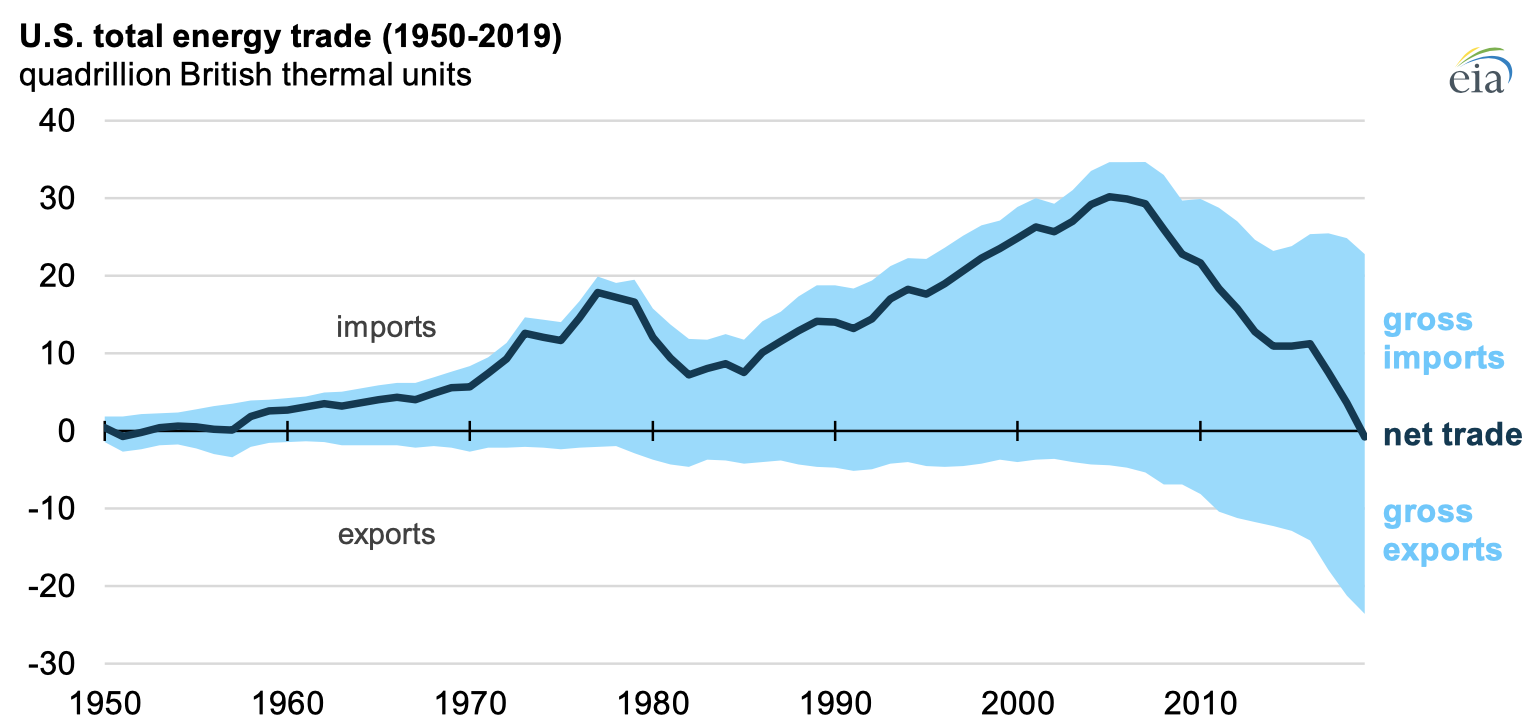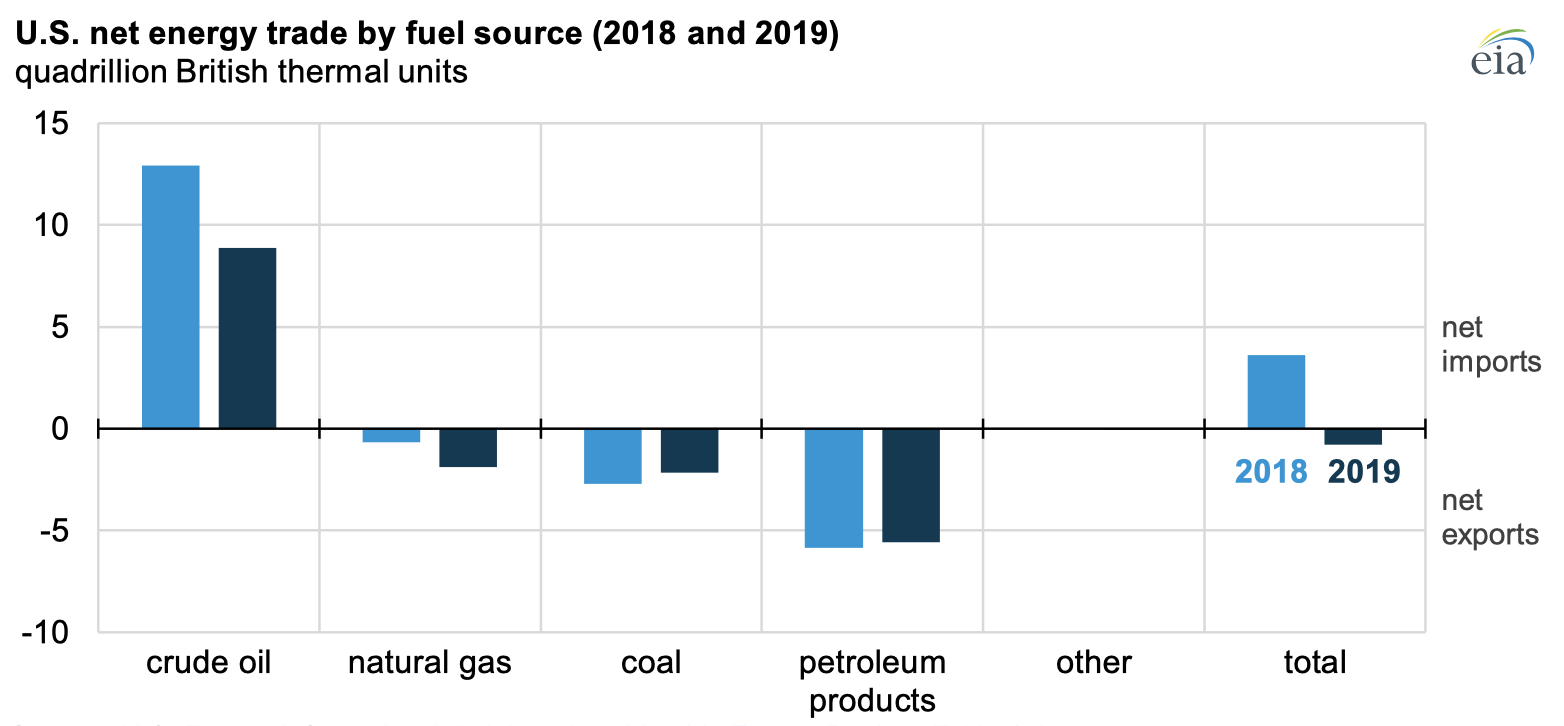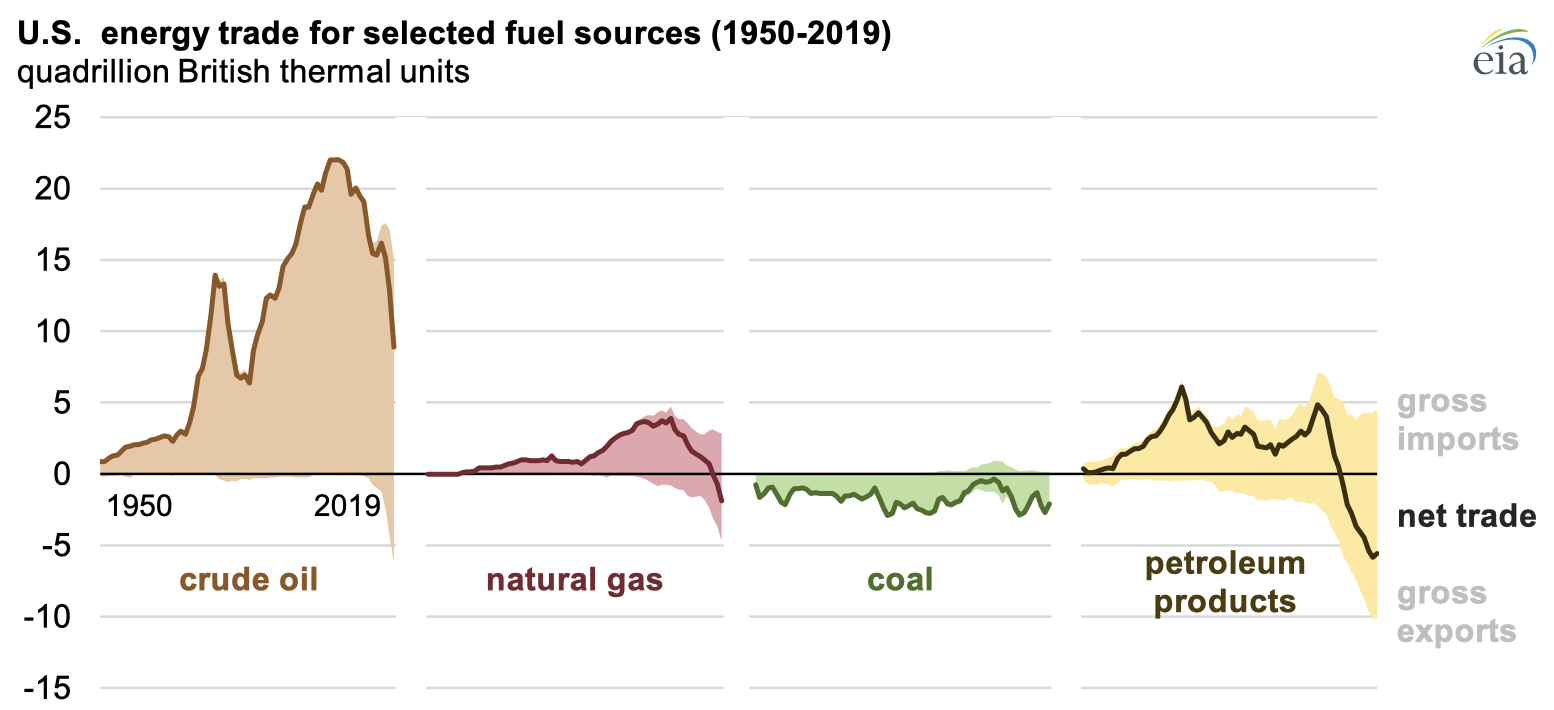U.S. total energy exports exceed imports in 2019 for the first time in 67 years
Apr 20, 2020Energy exports from the United States reached an all-time high of 23.6 quadrillion British thermal units (quads) in 2019, marking the first time in 67 years that annual U.S. gross energy exports exceeded U.S. gross energy imports, according to the U.S. Energy Information Administration’s (EIA) Monthly Energy Review. Gross U.S. energy imports were 22.8 quads in 2019, the lowest since 1995. Last year was the first year when the U.S. exported more energy than it imported since 1952, a year when the volume of energy imports and energy exports was much lower than it is today.

EIA’s Monthly Energy Review reports aggregate totals of energy data in different physical units (barrels, cubic feet, etc.) by converting them into common units of heat, measured in British thermal units. The aggregate heat contents of petroleum, natural gas, and coal vary based on the mix of component products being consumed.
Net U.S. energy imports have fallen from a peak of 30 quads in 2005, and they have decreased every year since 2016. Last year’s change in net energy trade in the United States—from 3.6 quads of net imports in 2018 to 0.8 quads of net exports in 2019—was the largest change in U.S. energy trade since 1980.

Last year’s change in U.S. energy trade was largely driven by decreases in net imports of crude oil. Natural gas net exports also increased, and net trade of the other energy sources remained similar to their 2018 levels. In 2019, the United States continued to be a net importer (importing more than it exports) of crude oil and—to a much smaller degree—electricity and a net exporter (exporting more than it imports) of coal, coal coke, natural gas, petroleum products, and biomass.
Crude oil: U.S. crude oil net imports, by energy content, decreased 31% from 2018 to 2019. This decrease of 4.1 quads (the equivalent of about 1.9 million barrels per day) accounted for most of the change in the net U.S. trade of total energy. In 2019, gross imports of crude oil decreased, and gross exports of crude oil increased. The United States has been a net importer of crude oil in every year since at least 1949 (the earliest in EIA’s energy trade data series). In 2019, Canada was both the largest source of U.S. crude oil imports and the largest destination for U.S. crude oil exports.

Petroleum products: Gross exports of petroleum products are the largest category of U.S. energy exports, but in 2019, gross exports of U.S. petroleum products decreased from a record high in 2018. The United States has been a net exporter of petroleum products in each year since 2011. In 2019, Canada was the largest source of U.S. petroleum product imports, and Mexico was the largest destination for U.S. petroleum product exports.
Natural gas: Gross exports of U.S. natural gas reached a record of 4.7 quads (nearly 12.8 billion cubic feet per day), up 29% from the previous year, continuing a five-year trend of annual increases. Gross U.S. natural gas imports also fell by 5% from the previous year. The United States has been a net exporter of natural gas since 2017. In 2019, Canada was the largest source of U.S. natural gas imports, and Mexico was the largest destination for U.S. natural gas exports.
Coal: Gross U.S. exports of coal decreased by 20% from 2018 to 2019, and gross coal imports increased by 12%. The United States has been a net exporter of coal since at least 1949. In 2019, India was the largest destination for U.S. coal exports.
More information about total energy consumption, production, trade, and emissions is available in EIA’s Monthly Energy Review.
Principal contributor: Bill Sanchez
Similar Stories
FTR Reports U.S. trailer net orders in December at 25,334 units, the most since October 2023
Total trailer production declined 10% m/m in December to 11,827 units, a relatively typical seasonal drop. However, production was down 40% y/y – 43% below the five-year December average –…
View Article
2024 marks record air cargo year for Vienna Airport
View Article
Today in Energy: A look back at our forecast for global crude oil prices in 2024
View Article
WorldACD Weekly Air Cargo Trends (week 2) - 2025
View ArticleDaphne Technology and Williams secure DOE grant to advance methane emission reduction technology
Daphne Technology, in partnership with Williams, has announced the award of a grant worth nearly $6M from the U.S. Department of Energy's (DOE) Methane Emissions Reduction Program (MERP).
View Article
Solar Prize Round 8 semifinalists & power up contest winners
View ArticleGet the most up-to-date trending news!
SubscribeIndustry updates and weekly newsletter direct to your inbox!





